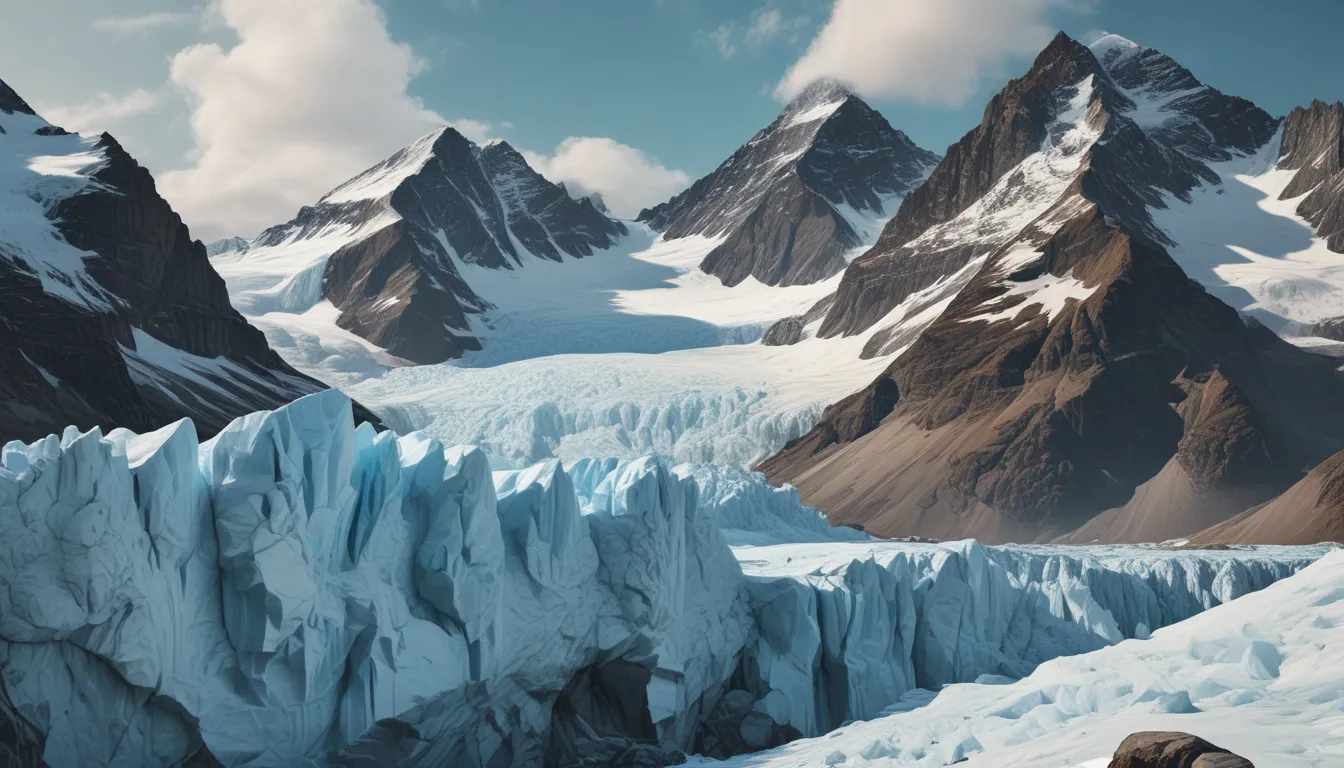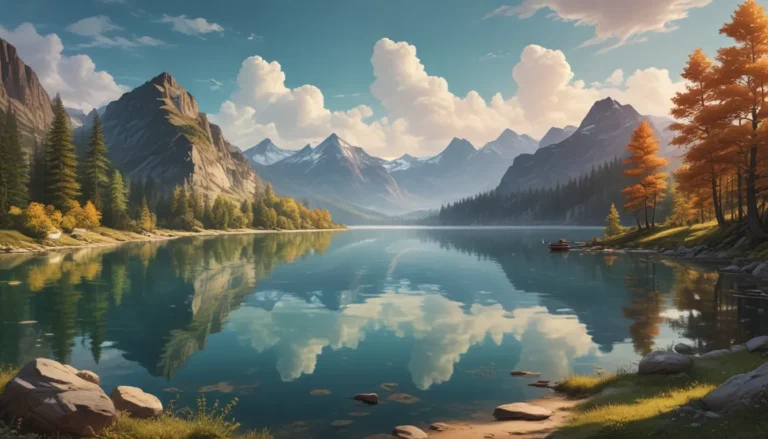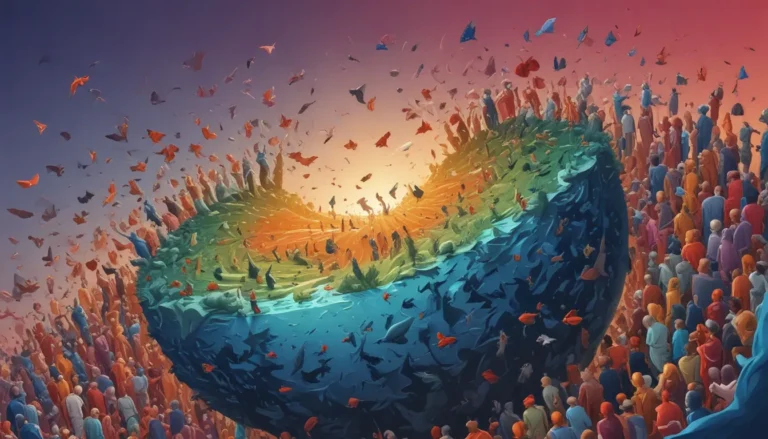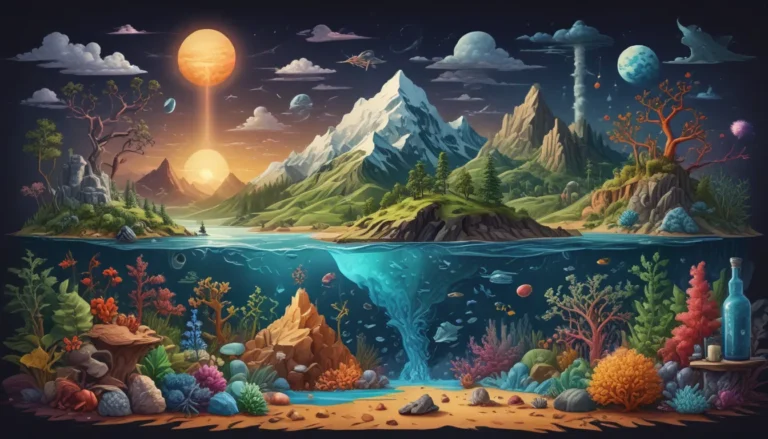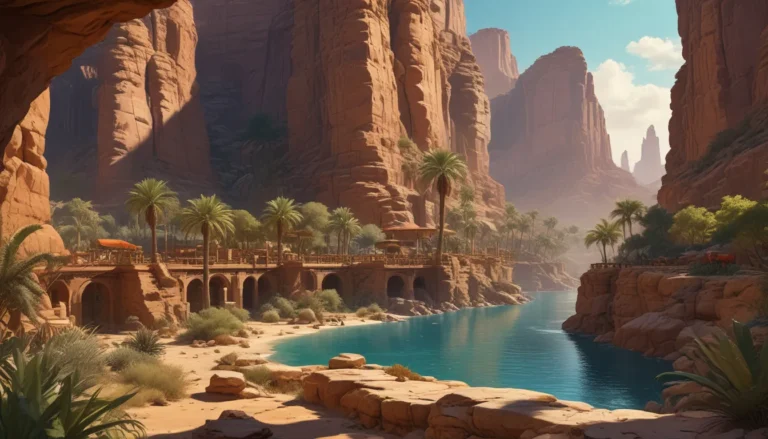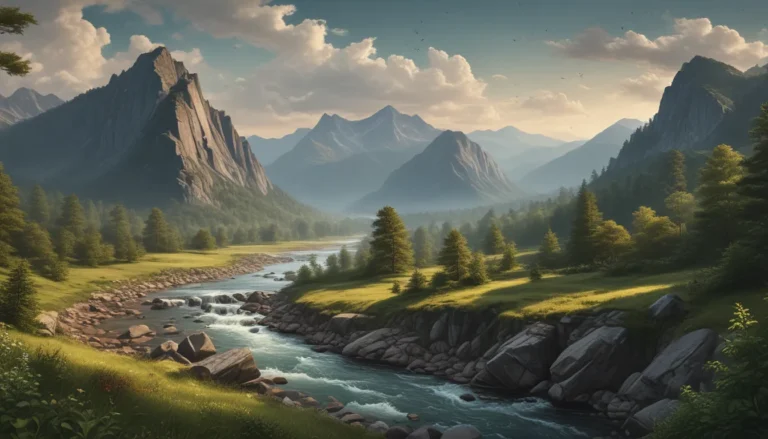A Note About Images: The images used in our articles are for illustration purposes only and may not exactly match the content. They are meant to engage readers, but the text should be relied upon for accurate information.
Glaciers, those majestic frozen rivers of ice, have piqued human curiosity and admiration for centuries. These stunning formations not only captivate with their beauty but also hold a treasure trove of secrets waiting to be unraveled. Join us on a virtual journey through the enigmatic world of glaciers as we uncover 18 fascinating facts that will leave you in awe. Whether you’re a geography enthusiast or simply looking to expand your knowledge, these insights will shed light on the unique characteristics and significance of these icy wonders.
The Formation and Beauty of Glaciers
Glaciers, massive bodies of ice formed from layers of compressed snow over thousands of years, are a sight to behold. As snow accumulates and compacts, it transforms into ice, creating these awe-inspiring frozen landscapes that shape the Earth’s ever-changing terrain.
Contrary to popular belief, glaciers can be found on every continent, spanning from the polar regions to high mountain ranges and even tropical areas near the equator. Mount Kilimanjaro, Africa’s highest peak, boasts several glaciers, showcasing the diverse presence of these icy giants across the globe.
The Majesty of Glacier National Park
Nestled in Montana, USA, Glacier National Park stands as a breathtaking natural oasis. With over 700 lakes, numerous waterfalls, and pristine hiking trails, this park is a testament to the splendor and diversity of glacier-filled landscapes.
The Impact of Climate Change on Glaciers
Sadly, the effects of climate change are taking a toll on glaciers worldwide, causing many to recede at an alarming rate. This loss of ice not only contributes to rising sea levels but also brings about significant changes in ecosystems, highlighting the urgent need for environmental conservation efforts.
Unveiling the Mystique of Glacial Phenomena
Glacial ice possesses a captivating blue hue due to its unique ability to absorb all colors of the visible light spectrum except for blue, creating mesmerizing visual displays. The Lambert-Fisher Glacier in Antarctica stands as the largest glacier globally, measuring approximately 400 kilometers in length and 100 kilometers in width, showcasing the sheer magnitude of these frozen behemoths.
The Power of Glacial Activity
Glaciers are not just static entities but powerful agents of erosion that shape the Earth’s landscape. As they move, glaciers gather rocks, sediments, and debris, which sculpt valleys, fjords, and other striking landforms, leaving behind a mark of their immense influence.
Embarking on Glacial Adventures
Explorers and enthusiasts can venture into the heart of glaciers through enchanting ice caves created naturally within the ice. These caves boast stunning formations, offering a glimpse into the beauty and complexity of glacier dynamics.
Understanding the Process of Glacier Melting
When glaciers undergo melting, they release copious amounts of water, contributing to the flow of rivers and the replenishment of freshwater sources. This crucial process plays a pivotal role in sustaining the delicate balance of ecosystems worldwide.
The Intriguing World of Glacier Moulins and Flour
Glacier moulins, vertical shafts carved by meltwater through the ice, beckon with their intricate and captivating formations. As glaciers grind against rocks, they produce fine powder known as “glacier flour,” giving glacial rivers their distinct milky appearance and adding to the allure of these icy landscapes.
The Formation of Glacial Landforms
Glaciers have left their mark on the Earth through the creation of stunning landforms such as U-shaped valleys, cirques, moraines, and drumlins. These unique features stand as testaments to the strength and artistry of glacial activity.
The Environmental Significance of Glaciers
The Antarctic Ice Sheet, the largest single mass of ice on Earth, holds approximately 70% of the world’s freshwater. Should this icy behemoth melt entirely, it would lead to a substantial rise in sea levels, underscoring the critical role glaciers play in maintaining the Earth’s delicate climate balance.
Experiencing the Dynamic Nature of Glaciers
Periods of rapid movement, known as glacial surges, can cause glaciers to advance several meters per day, creating unpredictable shifts in the surrounding landscape. These surges showcase the dynamic and ever-changing nature of glaciers.
Preserving Glacial Legacy Through Tourism
Glaciers serve as hotspots for tourists worldwide, drawing visitors with their striking beauty and offering unique opportunities for activities such as glacier hiking and ice climbing. These experiences not only educate and inspire but also highlight the importance of preserving these natural wonders for future generations.
Journeying Through Glacier Monitoring and Research
Scientists utilize a range of tools, from satellites to ground-based measurements, to monitor changes in glaciers and study the effects of climate change on these delicate ecosystems. By understanding and studying glaciers, we can better comprehend the implications of melting ice on our planet’s health.
Embracing the Mysteries of Glaciers
In conclusion, glaciers stand as captivating marvels of nature, rich with enigmatic facts waiting to be discovered. From their formation to their environmental impact, these icy giants offer a wealth of knowledge and insight into the Earth’s intricate workings. As we continue to explore and learn about glaciers, we gain a deeper appreciation for their beauty and significance in shaping our world.
As we encounter glaciers in our journeys or read about their wonders, let us reflect on the hidden mysteries they hold and the profound beauty they exude. Together, let’s cherish, explore, and safeguard these majestic ice formations for the generations to come.
Discovering Glacier FAQs
-
How are glaciers formed?
Glaciers form over time as layers of snow accumulate and compress into ice under the weight of new snowfall. -
Where are glaciers found?
Glaciers can be found in polar regions, high mountain ranges, and even tropical regions near the equator. -
How do glaciers shape the land?
Glaciers shape the land through erosion, carrying rocks and debris, and creating distinctive landforms like valleys and cirques. -
How do glaciers impact the environment?
Glaciers provide freshwater, influence weather patterns, and serve as indicators of climate change, showcasing their significant environmental impact. -
Are glaciers melting?
Yes, many glaciers are melting rapidly due to climate change, posing challenges for global sea levels and ecosystems. -
Can glaciers recede and grow?
Glaciers can both recede and grow based on the balance between new snowfall and melting. -
How do scientists study glaciers?
Scientists study glaciers using field observations, remote sensing technology, and computer modeling to monitor their behavior and environmental impact. -
Are glaciers important for humans?
Glaciers are crucial for freshwater resources, ecosystem support, hydropower generation, and tourism, underscoring their significance for human well-being. -
What is a calving glacier?
A calving glacier is a glacier that ends in water, with ice chunks breaking off to form icebergs. -
Can you hike on a glacier?
It is possible to hike on some glaciers with the right equipment, knowledge, and guidance to ensure a safe and enjoyable experience.
Embracing Authenticity and Quality
Our commitment to delivering accurate and engaging content lies at the core of our mission. Each fact shared on our platform is contributed by individuals like you, offering diverse insights and information that undergo meticulous review by our dedicated editors. By upholding the highest standards of authenticity and quality, we strive to provide you with credible and captivating facts that enrich your exploration and learning endeavors. Trust in our dedication to excellence as you discover the wonders of the world with us.
